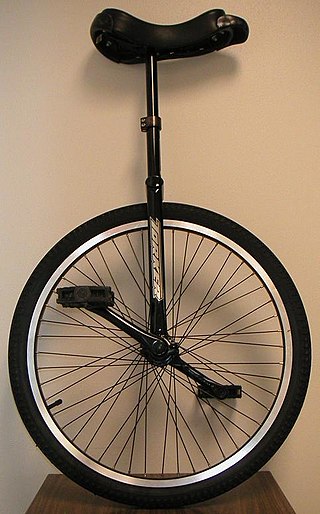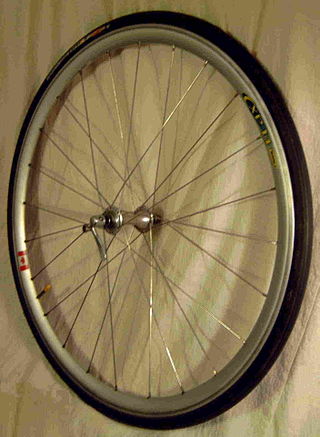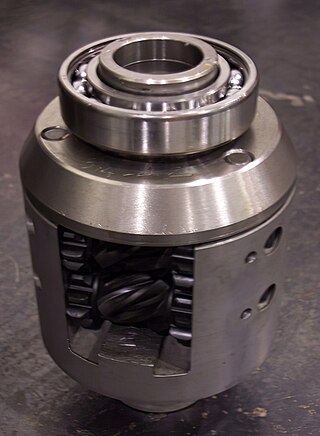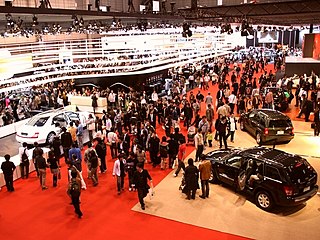
The Honda U3-X is an experimental self-balancing one-wheeled personal transporter shown in 2009.

The Honda U3-X is an experimental self-balancing one-wheeled personal transporter shown in 2009.

It was unveiled by Honda's CEO on September 24, 2009, and it was announced that it would be shown at the 2009 Tokyo Motor Show. [1] Time magazine called it one of the 50 best inventions of 2009. [2] In April 2010, Honda engineers did a short demonstration of two of the devices in Times Square, New York City. [3] In May 2010, Honda representatives demonstrated the U3-X at the Honda Collection Hall in Motegi, Tochigi, Japan
Honda presented the Honda UNI-CUB, a successor to this device at Osaka Motor Show 2013. [4]
Honda developed the U3-X with technology originally developed for ASIMO the bipedal human robot project. Honda states that the "U" stands for unicycle and for universal. [5] It weighs 10 kg (22 lb) and travels at 6 km/h (3.7 mph), a similar speed to the Toyota Winglet. Honda U3-X is a compact experimental device that fits comfortably between the rider's legs, to provide free movement in all directions just as in human walking - forward, backward, side-to-side, and diagonally. [6] It uses Honda Omni-Traction (HOT) drive system to permit it to move in any lateral direction. The system uses multiple small diameter motorised wheels connected inline to form one large diameter wheel. Rotating the large diameter wheel moves the U3-X forward and backward, while rotating the small diameter wheels moves it side-to-side. Combining these movements causes the U3-X to move diagonally.
It has not been announced yet whether the vehicle will be offered for public sale. The price is not announced yet.
Honda stated the U3-X key specifications as follows: [3]

A unicycle is a vehicle that touches the ground with only one wheel. The most common variation has a frame with a saddle, and has a pedal-driven direct-drive. A two speed hub is commercially available for faster unicycling. Unicycling is practiced professionally in circuses, by street performers, in festivals, and as a hobby. Unicycles have also been used to create new sports such as unicycle hockey. In recent years, unicycles have also been used in mountain unicycling, an activity similar to mountain biking or trials.

An anti-lock braking system (ABS) is an safety anti-skid braking system used on aircraft and on land vehicles, such as cars, motorcycles, trucks, and buses. ABS operates by preventing the wheels from locking up during braking, thereby maintaining tractive contact with the road surface and allowing the driver to maintain more control over the vehicle.

An electric unicycle is a self-balancing personal transporter with a single wheel. The rider controls speed by leaning forwards or backwards, and steers by twisting or tilting the unit side to side. The self-balancing mechanism uses accelerometers and gyroscopes. Most manufacturers of EUCs are based out of China, including Segway, Inmotion, Kingsong, Begode, and Leaperkim.

A bicycle wheel is a wheel, most commonly a wire wheel, designed for a bicycle. A pair is often called a wheelset, especially in the context of ready built "off the shelf" performance-oriented wheels.

The Toyota Matrix, officially named Toyota Corolla Matrix, is a compact hatchback manufactured by Toyota Motor Manufacturing Canada in Cambridge, Ontario and derived from the Corolla. Introduced in 2002 as a 2003 model, the Matrix was the result of a joint venture between Toyota and General Motors, with the GM version being the Pontiac Vibe, which was assembled by New United Motor Manufacturing, Inc. (NUMMI) in Fremont, California, United States.

A four-wheel drive, also called 4×4 or 4WD, is a two-axled vehicle drivetrain capable of providing torque to all of its wheels simultaneously. It may be full-time or on-demand, and is typically linked via a transfer case providing an additional output drive shaft and, in many instances, additional gear ranges.

The Acura RL is a mid-size luxury car that was manufactured by the Acura division of Honda for the 1996–2012 model years over two generations. The RL was the flagship of the marque, having succeeded the Acura Legend, and was replaced in 2013 by the Acura RLX. All models of the Legend, RL and RLX lines have been adapted from the Japanese domestic market Honda Legend. The model name "RL" is an abbreviation for "Refined Luxury."

In automotive design, a front-engine, front-wheel-drive (FWD) layout, or FF layout, places both the internal combustion engine and driven roadwheels at the front of the vehicle.

The Honda Legend is a series of V6-engined executive cars that was produced by Honda between 1985 and 2021, and served as its flagship vehicle. The Legend has also been sold under the Acura Legend, RL and RLX nameplates — the successive flagship vehicles of Honda's luxury Acura division in North America from 1986 until 2020.
Hybrid Synergy Drive (HSD), also known as Toyota Hybrid System II, is the brand name of Toyota Motor Corporation for the hybrid car drive train technology used in vehicles with the Toyota and Lexus marques. First introduced on the Prius, the technology is an option on several other Toyota and Lexus vehicles and has been adapted for the electric drive system of the hydrogen-powered Mirai, and for a plug-in hybrid version of the Prius. Previously, Toyota also licensed its HSD technology to Nissan for use in its Nissan Altima Hybrid. Its parts supplier Aisin offers similar hybrid transmissions to other car companies.

Torsen Torque-Sensing is a type of limited-slip differential used in automobiles.

The i-unit is an ultra-compact single seater four wheeled Toyota concept car. It debuted at the World Expo 2005, held in Aichi Prefecture, Japan. The vehicle is a cross between a microcar, a motorcycle, and a vehicular exoskeleton. The goal of Toyota is to provide a personal mobility, which can be used on roads but also does not hinder interaction with pedestrians. For this the i-unit has two possible setups. First, there is an upright low speed setup, where the rider has a higher position and can have conversations face-to-face with pedestrians and can move among people. This upright position can be transformed while driving to a low position, where the rider sits much lower and more reclined. This high speed setup has a much lower center of gravity and is for driving at higher speeds.

The Toyota Mark X is a mid-size car manufactured by Toyota between 2004 and 2019, and was primarily aimed at the Japanese market. The Mark X was introduced in 2004 and is the successor to the Mark II which was first introduced in 1968, and was known in the North American market as the Corona Mark II starting in 1972, and renamed the Cressida from 1977 to 1992.

The Japan Mobility Show (ジャパンモビリティショー) (TMS) is a biennial auto show held in October–November at the Tokyo Big Sight, Tokyo, Japan for cars, motorcycles and commercial vehicles. Hosted by the Japan Automobile Manufacturers Association (JAMA), it is a recognized international show by the Organisation Internationale des Constructeurs d'Automobiles, and normally sees more concept cars than actual production car introductions which is the reason why the auto press see the show as one of the motorshow's big five.
Super Handling-All Wheel Drive (SH-AWD) is a full-time, fully automatic, all-wheel drive traction and handling system, which combines front-rear torque distribution control with independently regulated torque distribution to the left and right rear wheels. This way the system freely distributes the optimum amount of torque to all four wheels according to the driving conditions. The system was announced in April 2004, and was introduced in the North American market in the second generation 2005 model year Acura RL, and in Japan as the fourth generation Honda Legend.

The Williams FW30 is a Formula One racing car, designed by Williams for the 2008 Formula One season. The car is largely an evolution of its predecessor, the FW29. As with its predecessor, the FW30 is powered by engines manufactured by Toyota. The FW30 was unveiled to the public on 21 January 2008 at the Circuit de Valencia, Spain, and made its race debut at the Australian Grand Prix and was driven by Nico Rosberg and Kazuki Nakajima.
Toyota concept vehicles are transportation devices manufactured or designed by automobile company Toyota from 2000 to 2009. As their name suggests, these vehicles were concepts, and, as such, many were never released to dealerships. Many were developed in conjunction with other corporations such as Sony or Subaru.
This is a list of concept vehicles from Toyota for the years 2010–2019.

The Honda UNI-CUB is a concept 2-axis self-balancing personal transporter for use in barrier-free indoor environments, and shown at the Osaka Motor Show 2013.

A personal transporter is any of a class of compact, mostly recent, motorised micromobility vehicle for transporting an individual at speeds that do not normally exceed 25 km/h (16 mph). They include electric skateboards, kick scooters, self-balancing unicycles and Segways, as well as gasoline-fueled motorised scooters or skateboards, typically using two-stroke engines of less than 49 cc (3.0 cu in) displacement. Many newer versions use recent advances in vehicle battery and motor-control technologies. They are growing in popularity, and legislators are in the process of determining how these devices should be classified, regulated and accommodated during a period of rapid innovation.